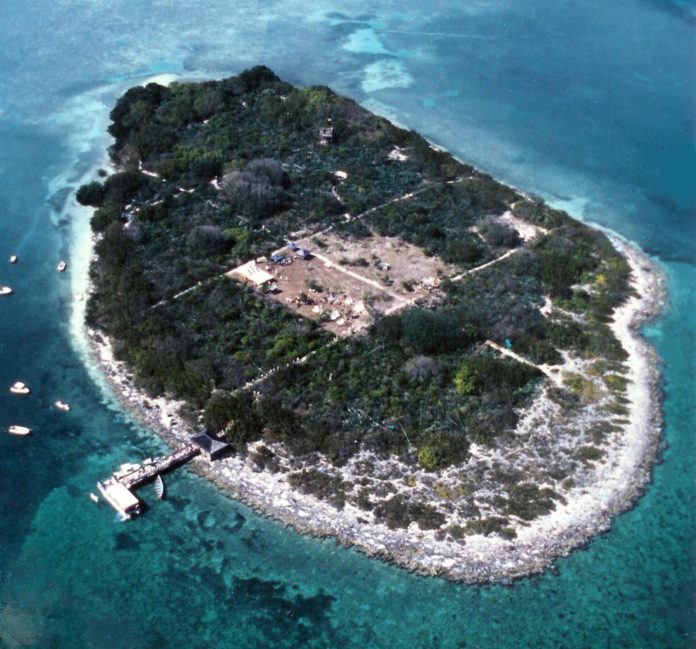Editor’s Note: This is the first in a four-part series on Indian Key.
Those first few dark hours of Friday, Aug. 7, 1840, altered the history of the Florida Keys. The gibbous moon was growing fatter in the sky – it would appear fully engorged in six nights.
Moonlight flickered across the Atlantic Ocean, causing twinkles of light to glint off the crescents of the gentle waves. On the small island just offshore of the Matecumbe keys, the chirr of cicadas wound up to a shrill calling only to stop as if an orchestra conductor had waved his wand.
The small, 11-acre island grew preternaturally quiet. The shingles of the warehouses, the tallest structures in the wrecking village, eclipsed the tree line at the eastern edge of the island. Moonbeams pushed the dark silhouette of a picket fence against the ground in the town square. A single lantern glowed through the dirty window of a two-room wooden shack on the western edge of the island.
It was August in sub-tropical Florida, hot and muggy, even at 2 a.m. One of the island’s carpenters, a man named Glass, was miserable in his sweat-soaked bed. Unable to sleep, he rose from his bed and stepped outside in hopes of finding cool relief. Standing on the coral dust pathway, he listened as the wind rustled through buttonwood leaves and over coconut fronds. Glass took a deep breath and filled his lungs with the night air. He stretched his arms over his head as if reaching for the stars.
Taking in another deep breath, Glass began to look around. His eyes adjusted to the moonlight; trees began to define themselves. A rat scurried across the path and up the trunk of a buttonwood tree – its long branches stretched out over the water. Glass looked at the tree. Something was out of the ordinary, something out of place caught in the corner of his eye.
It took a second and then another second for what he was seeing to register as the dark outlines of canoes pulled up onto the island’s limestone edge came into focus. They were Indian canoes. His heart thundered as he pointed his finger and counted – one, two, three, eight, 10, 12. The carpenter quickly turned and walked to the cottage next door, where he rapped gently on the door with a single, soft knuckle. Pushing the door open, it slowly creaked. “Beiglett,” he whispered. “Beiglett, wake up.”
“How many times do I have to…”
“Quiet, quiet. There’s Indians out there.”
Beiglett spoke quietly. “What are you saying?’
“Get your shotgun. We need to go warn the captain.”
Captain Housman lived in a two-story house facing east out over the water. To reach him, the two men would have to cross the town square in the middle of the island. Glass and Beiglett left the cottage but stayed close to its side as they worked their way cautiously toward the back of the house. With their backs against the wooden planks, they could make out the picket fence and the town square ahead. Beyond the square, Captain Housman’s house was off to the left on the other side of the island, and the warehouses stood to the right.
Beiglett gripped his shotgun in his hands as the two men crept toward the picket fence. Hidden within the mix of light and shadow, the two men did not see the Indians. When they stumbled upon them, the melee began. One of the Indians raised his rifle and aimed it, but when he squeezed his finger against the trigger, the gun flashed but failed to burn enough to fire its ball. In what must have been a mutual reaction, Beiglett raised the muzzle of his shotgun and screamed as he pulled the trigger and fired in the direction of the Indians.
Hearing Beiglett’s yell and thinking he had been shot, Glass ran off just as fast as possible. Unscathed, Beiglett ran, too. Initially, he ran across the town square and past the warehouse until he reached the pier at the island’s edge. He stooped down, crawled underneath, and hid. He was not the only one. A boy had been sleeping on the warehouse piazza. He was startled awake by the gunfire, if not the shrieks, and ran away from the warehouse to hide underneath the pier, too. Soon after, a third man crawled underneath to join them.
The three of them huddled together, hiding beneath the narrow space separating the island from the deck of the wharf as the Indians began to ravage the island. Someone among them decided that it might be safer to abandon the wharf and run for the warehouses. Beneath the first floor of the second warehouse was a large cistern carved into the limestone by a mason.
They crawled out from under the wharf and, one-by-one, stole across the path and up to the warehouse where a trap door led to the cistern. The two men and the boy slipped through the trap door and into the dark cistern’s chest-deep water. The door was lowered behind them.
As the sun began to rise, light slipped between the cracks of the building. Curious about what was transpiring around them, Beiglett crept out of the cistern, into the warehouse, up the stairs, and into the cupola. From the third-story vantage point, he could see across the island. The Indians were everywhere.





















